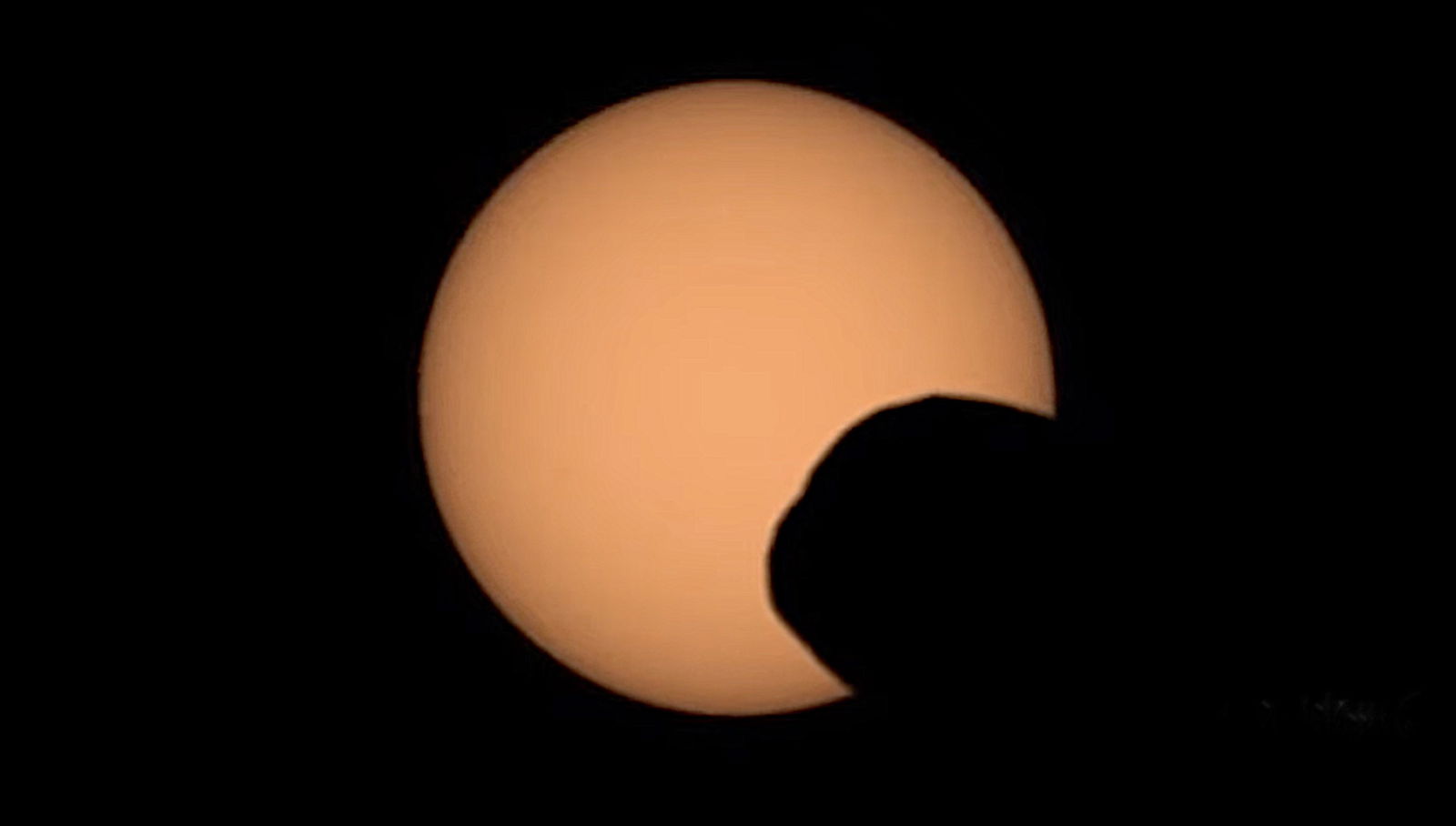NASA’s Perseverance rover has captured striking new imagery of an oddly shaped Martian moon as it passed before the Sun during a recent Red Planet eclipse event.
The new video reveals Mars’ innermost and largest moon, Phobos, as it is seen passing in front of the sun. The planet’s unique natural satellite, often compared to a potato in shape, eclipses the lower portion of the solar disc during its transit.
As Phobos’ irregularly shaped silhouette completes its pass, an effect NASA likened to a “googly eye” peering down from space was produced, as shown in the new video (see below).
A Martian Eye in the Sky
The imagery was captured by Perseverance from its current location on the western portion of Jezero Crater, where the robotic rover has been conducting investigations since its arrival on the Red Planet in search of possible evidence of ancient life. The event occurred on the 1,285th Martian day of the rover’s mission.
As Phobos passed in front of the Sun, Perseverance and its multispectral Mastcam-Z, a specialized stereoscopic imaging instrument, were perfectly positioned to capture the eclipse as the Martian moon’s transit created a pupil-like appearance against the larger “iris” of the Sun.
The celestial event was captured on September 30, 2024, producing a large antumbra or shadow as the peculiar moon drifted along its path before the Sun.
Fear, Phobos, and Mythology in Martian Orbit
Along with its unique appearance, Phobos has an equally intriguing story. Named in 1877 for the Greek god of fear and panic by astronomer Asaph Hall, the potato moon of Mars received its title from the same mythological figure from which the modern word “phobia” is derived.
Along with Phobos, the second Martian moon, occupying a wider, more distant orbit around the planet, was named Deimos after the mythological brother of Phobos.
Compared to Earth’s moon, Phobos is not only far different looking, but also nearly 157 times smaller at just 17 miles across at its widest point. Like its brother Phobos, Deimos is also tiny in comparison to our moon, and is dwarfed in size by its sibling.
Given its close proximity to the Martian surface, Phobos maintains a swift orbit, and events where it transits the Sun aren’t uncommon. However, due to the speed of its orbit, each eclipse event typically lasts no more than about half a minute.
Ongoing Observations by Perseverance
In the past, Perseverance has succeeded in capturing similar events, including one of Phobos’ solar transits that occurred in February 2021.
Perseverance also isn’t the only robot operating on Mars that has observed these events. In 2019, its cousin the Curiosity rover also managed to capture one of Phobos’ transits, as did Opportunity all the way back in 2004.
Combining data from these transits allows scientists to better understand Phobos and its orbit, and going forward, future NASA missions in cooperation with its international partners will likely continue to obtain data and imagery that will help reveal more about the orbital dynamics of Mars and its curious moons.
Micah Hanks is the Editor-in-Chief and Co-Founder of The Debrief. He can be reached by email at micah@thedebrief.org. Follow his work at micahhanks.com and on X: @MicahHanks.

